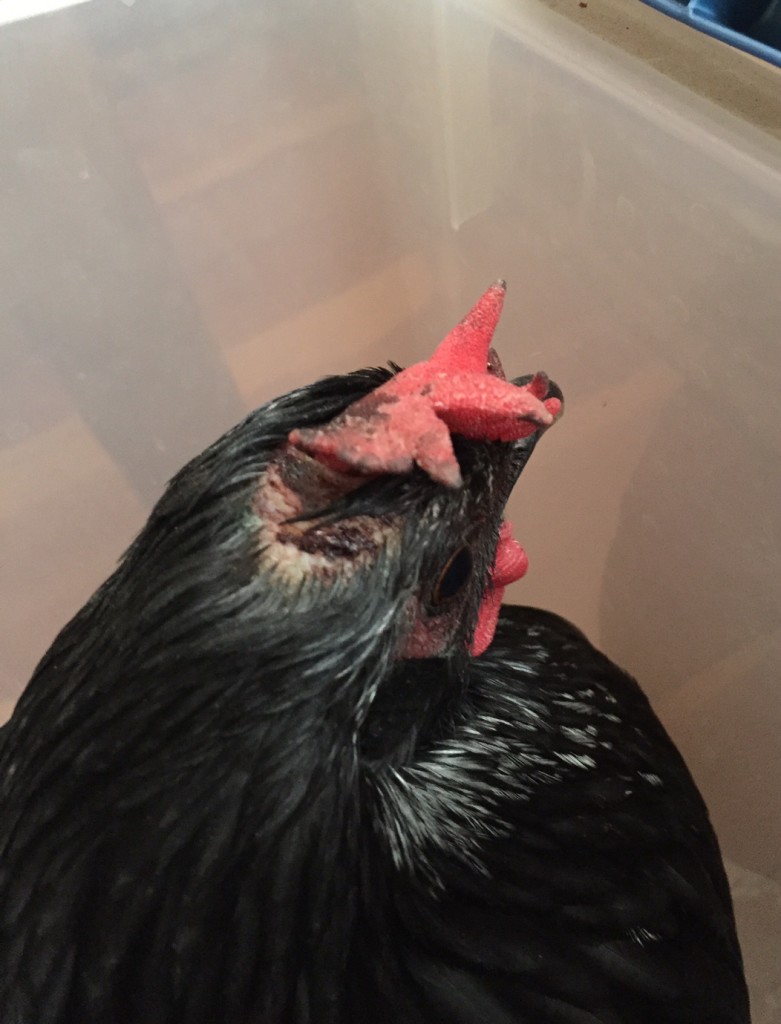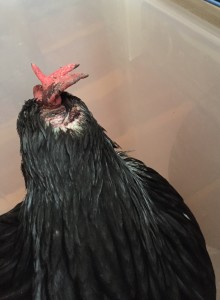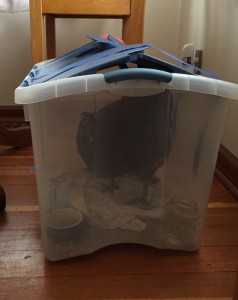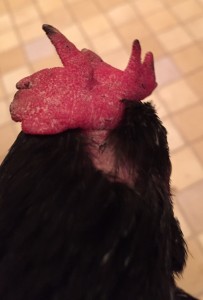It is an unavoidable part of keeping backyard chickens – at some point one of your flock members is going to get injured or become ill. In these situations you need to be able to create a workable “chicken sick bay” indoors where you can provide the necessary chicken nursing care. The need to be able to dispense home chicken health care is especially true with the general shortage of veterinaries with poultry expertise at a reason price in today’s world. Recently, I found myself scrambling to assemble a makeshift “chicken sick bay” to care for an injured pullet.
My backyard flock is made up of two chicken gangs. The more established group is my three older hens who live in my main coop. The rival chicken clique is my group of newer pullets, all of whom are not quite a year old. These “little girls” (pullets) live in a tractor that I built initially for my first flock. I have not merged the two groups into one flock yet because some of the pullets are still too small to protect themselves from the “big girls,” if they were all locked up in the same coop. For better or worse, I decided that the two groups would live separately until springtime when I will combine them into the main coop and run.
Despite not living together, the two chicken gangs are well acquainted through regular all flock “play dates” in the yard. Overall, this free-range socializing between the big and little hens in the yard has gone pretty well. There is, of course, some mild chasing and the random peck as the older hens exert their rank over the pullets. A couple weeks ago though, something went amiss in the all flock play date.
I was inside my house when I heard a loud “BAWK” from one of the hens. I briefly went outside to investigate but noticed nothing wrong. A couple hours later when I was locking up the coops for the night, I discovered poor Francesca Chicken (my black feathered Blue Bresse) trapped under the lowest bar of an ornamental garden obelisk. Her comb was bloodied and her skull was gashed near the base of her comb. Wedged under this yard decoration and injured, she looked truly pathetic.
I brought Francesca inside my house to treat her wounds. I washed all of the feathers on the crown of her head which were stiff from being coated in blood with warm water. I then treated the cut on her head with hydrogen peroxide being quite careful not to get any in her eyes. The ugly wound bubbled and hissed while the hydrogen peroxide cleaned away potential germs. I concluded my amateur chicken doctoring by daubing her freshly cleaned wound with a bit of antibiotic ointment (i.e. no-name Neosporin).
As I cleaned and cared for Francesca, I could not discern whether her injuries were the result of mysteriously getting trapped under the metal yard art or from being pecked by the other hens or a combination of the two possible causes. She was however completely exhausted by the whole ordeal of being injured and then cared for against her will, and it seemed that the compassionate thing to do would be to keep her indoors while she recuperated. But where does one suddenly house a chicken indoors?
In my dining area, I quickly assembled a chicken sick bay using a large, hinge-lidded, plastic tote. Francesca fit well inside of the tote, which was made slightly more comfortable by an old beach towel used as bedding. I also provided her a small dish of food and a canning jar with fresh water in the corner of the tote. Worried that I might suffocate this bedraggled hen if I simply shut the lid on the tote, I propped it open with use of my duster. I then secured the partially opened lid with a little painters tape on the outside of the tote.
Francesca tolerated being indoors for a few days and it gave her wound a chance to close up and not be a temptation for pecking by other flock members. You might want to be better prepared than I was for the inevitability of having to nurse a chicken indoors, by figuring out (before it is a crisis) what you will use for your chicken sick bay. I was really lucky to have an empty tote available at the time of Francesca’s injury. Without that tote, I would have been hard-pressed for an appropriate place to house this hen as she recuperated. The tote worked well and was easy to clean – which might be a simple solution for your future chicken sick bay needs.
SUPPORT THE URBAN CHICKEN PODCAST:
- Support the Urban Chicken Podcast by shopping Amazon starting here: Amazon
- If Amazon is not your thing – you could also support the show HERE




